Techniques for Drilling into Stone: A Step-by-Step Guide

Drilling into stone can be a challenging task, but with the right techniques and tools, it can be done effectively and efficiently. Whether you are a professional mason or a DIY enthusiast, knowing how to drill into stone is a valuable skill to have. In this step-by-step guide, we will walk you through the process of drilling into stone, from selecting the right drill bit to properly securing the stone.
Step 1: Choose the Right Drill Bit
To successfully drill into stone, it is crucial to use the correct type of drill bit. Regular drill bits are not designed to handle the hardness and density of stone. Instead, you will need a masonry drill bit or a diamond-coated drill bit. Masonry drill bits are made of hardened steel and have a carbide tip that is specifically designed to penetrate the tough surface of stone. Diamond-coated drill bits, on the other hand, have a layer of diamond particles that can slice through stone effortlessly.
Step 2: Prepare the Stone
Before you start drilling, it is important to prepare the stone properly. Make sure the surface of the stone is clean and free of any debris. If the stone is uneven or has a rough texture, use a chisel or a grinder to smoothen the area where you plan to drill. This will ensure that the drill bit can make a clean and accurate hole without getting stuck or causing damage to the stone.
Step 3: Secure the Stone
Securing the stone is essential to prevent it from moving or cracking while you drill. Place the stone on a stable surface or use clamps to hold it firmly in place. If the stone is particularly large or heavy, it may be necessary to have someone assist you in supporting it. This will help to maintain stability and safety throughout the drilling process.
Understanding the Different Types of Stone
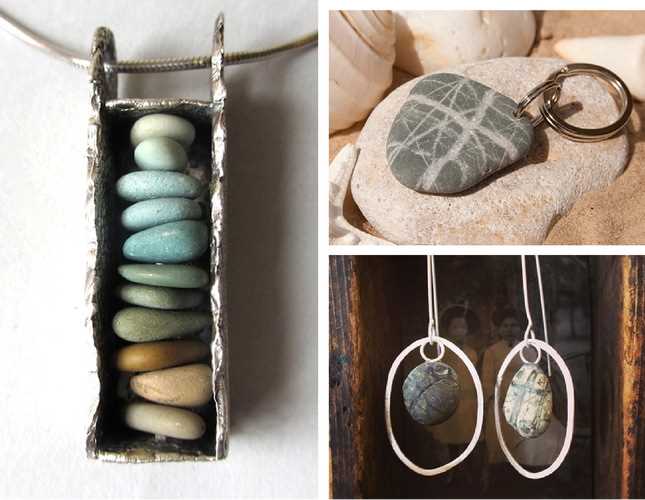
When it comes to drilling into stone, it’s important to understand the different types of stone you may encounter and how they differ in terms of hardness, composition, and drilling techniques. Below are some of the most common types of stone and their characteristics:
1. Granite
Granite is a very hard and durable stone. It is composed mainly of quartz, feldspar, and mica. Due to its hardness, drilling into granite requires special drill bits and techniques. Diamond-tipped drill bits are typically used for drilling into granite.
2. Marble
Marble is a softer stone compared to granite. It is composed of recrystallized carbonate minerals, usually calcite or dolomite. When drilling into marble, it is important to use a slower drilling speed to prevent damage to the stone. Carbide-tipped drill bits are commonly used for drilling into marble.
3. Sandstone
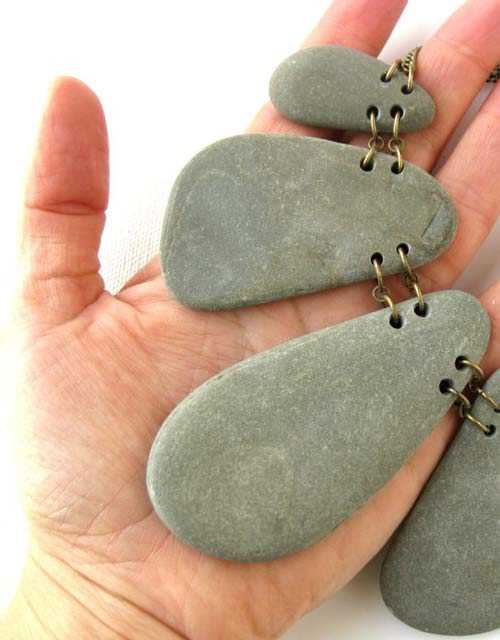
Sandstone is a sedimentary rock composed mainly of sand-sized minerals or rock grains. It varies in hardness, with some sandstones being softer and more easily drilled than others. For drilling into sandstone, carbide-tipped drill bits or masonry drill bits can be used.
4. Limestone
Limestone is a sedimentary rock composed of calcium carbonate. It is often softer than granite or marble but can vary in hardness. When drilling into limestone, carbide-tipped or diamond-tipped drill bits can be used, depending on the hardness of the specific limestone.
5. Slate
Slate is a fine-grained metamorphic rock that is easily split into thin, smooth-surfaced layers. It is generally softer than granite or marble. When drilling into slate, masonry drill bits or diamond-tipped drill bits can be used.
6. Travertine
Travertine is a form of limestone that is characterized by its distinctive, porous formation. It is often used as a building material and for decorative purposes. When drilling into travertine, carbide-tipped or diamond-tipped drill bits may be used, depending on the hardness of the specific travertine.
By understanding the different types of stone and their characteristics, you can choose the appropriate drill bits and techniques for drilling into stone effectively and efficiently.
Learning the Characteristics of Various Stone Materials
Understanding the Importance of Knowing Stone Materials
Before drilling into any stone material, it is essential to understand the characteristics of the specific stone you are working with. Different types of stone have different hardness levels and composition, which can greatly affect the drilling process. By learning about the different stone materials, you can choose the appropriate drilling techniques and tools for the job.
List of Common Stone Materials
- Granite: known for its durability and hardness, making it a popular choice for countertops and flooring.
- Marble: a softer stone often used in sculptures and decorative applications.
- Slate: a fine-grained, low-maintenance stone used for roofing, flooring, and fireplace surrounds.
- Limestone: a sedimentary stone commonly used in building materials and monuments.
- Sandstone: a porous stone with a variety of colors, commonly used in construction and landscaping.
Determining Stone Hardness
Stone hardness is typically measured using the Mohs scale, which ranks minerals on a scale of 1 (softest) to 10 (hardest). Knowing the hardness of the stone you are drilling into is crucial in selecting the appropriate drilling method and tools.
Factors Affecting Drillability
Aside from hardness, other factors can affect how easily a stone can be drilled:
- Density: denser stones may require more powerful drills and specialized techniques.
- Mineral Composition: stones with higher mineral content may be more difficult to drill through.
- Porosity: more porous stones may require different drilling techniques to prevent damage.
- Grain Structure: the arrangement of grains within a stone can affect its drillability.
Consulting Stone Experts
If you are uncertain about the characteristics of a particular stone material, it is advisable to consult with stone experts or professionals in the field. They can provide valuable insights and guidance on the best practices for drilling into specific types of stone.
Identifying the Strength and Density of the Stone
Before beginning the drilling process, it is important to identify the strength and density of the stone you will be working with. This information will help determine the appropriate drilling techniques and tools to use, ensuring a successful and efficient drilling experience.
1. Visual Examination
The first step in identifying the strength and density of the stone is to visually examine its surface. Look for any cracks, fissures, or other irregularities that may affect the drilling process. Stones with visible cracks and weaknesses should be handled with caution, as they may require special drilling techniques.
2. Density Test
To determine the density of the stone, you can perform a simple density test. Weigh a small sample of the stone and then measure its volume. Divide the weight by the volume to calculate the density. Stones with higher density are generally harder and more challenging to drill into.
3. Scratch Test
A scratch test can help determine the hardness of the stone. Use a sharp object, such as a metal nail or a knife, to scratch the surface of the stone. If the stone is easily scratched, it is likely to be softer and easier to drill into. On the other hand, if the surface remains unaffected by the scratching, the stone is likely to be harder and more difficult to drill into.
4. Porosity Test
The porosity of the stone refers to its ability to absorb water or other liquids. A porous stone may have more air pockets and irregularities, making it easier to drill into. To test the porosity of the stone, pour a small amount of water onto its surface and observe how quickly it is absorbed. If the water is quickly absorbed, the stone is likely to be more porous and easier to drill into.

5. Consult the Stone Manufacturer or Supplier
If you are unsure about the strength and density of the stone, it is always a good idea to consult the manufacturer or supplier. They can provide valuable information about the stone’s composition, strength, and recommended drilling techniques. This information can help ensure that you choose the right tools and methods for drilling into the stone.
Conclusion
Identifying the strength and density of the stone is crucial before drilling. By visually examining the stone, performing density and scratch tests, and considering its porosity, you can determine the appropriate drilling techniques and tools. Consulting the stone manufacturer or supplier can also provide valuable insights. Taking the time to identify these factors will help ensure a successful drilling experience.
Choosing the Right Tools and Equipment
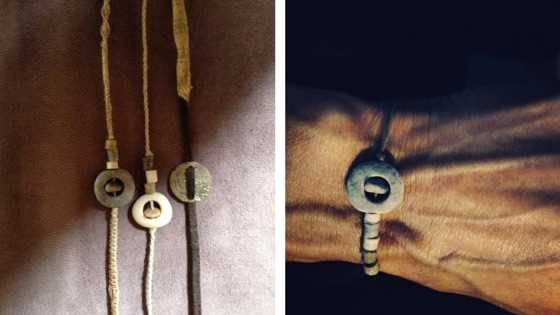
When it comes to drilling into stone, having the right tools and equipment is essential for success. Here are some factors to consider when choosing the tools and equipment for your project:
Type of Stone
The type of stone you are working with will determine the type of tools and equipment you will need. Some stones are more difficult to drill into than others, so it is important to choose tools that are specifically designed for the type of stone you are working with.
Drill Bits
One of the most important tools you will need for drilling into stone is a drill bit. There are different types of drill bits available for different purposes, such as masonry bits, diamond-tipped bits, and carbide-tipped bits. It is important to choose a drill bit that is designed for stone drilling to ensure that you can effectively penetrate the stone surface.
Drill Size and Power
The size and power of the drill you choose will also depend on the size and hardness of the stone you are drilling into. For smaller stones and softer materials, a smaller, less powerful drill may be sufficient. However, for larger stones and harder materials, you may need a larger, more powerful drill to ensure that you can effectively drill through the stone.
Dust Control
Drilling into stone produces a lot of dust, which can be harmful to your health and can also hinder your visibility. It is important to choose tools and equipment that have proper dust control measures in place. This can include using a wet drilling technique, using a dust collector, or wearing a dust mask to protect yourself from inhaling harmful dust particles.
Safety Equipment
When drilling into stone, it is important to prioritize safety. Make sure to wear protective equipment such as safety goggles, gloves, and ear protection to protect yourself from potential injuries. Additionally, make sure to read and follow all safety instructions provided by the manufacturer of the tools and equipment you are using.
Additional Equipment
Depending on the specifics of your project, you may also need additional equipment such as clamps or supports to stabilize the stone while drilling, or lubricants to reduce friction and heat generated during the drilling process. Consider the specific requirements of your project and ensure that you have all the necessary equipment on hand.
By carefully considering the type of stone, drill bits, drill size and power, dust control measures, safety equipment, and any additional equipment needed, you can ensure that you have the right tools and equipment to successfully drill into stone and achieve your desired results.
Exploring the Different Types of Drill Bits for Stone
When it comes to drilling into stone, using the right drill bit is crucial. Stone is a hard and dense material, so standard drill bits may not be effective. There are several different types of drill bits specifically designed for working with stone. Let’s take a closer look at some of the most common types:
1. Masonry Drill Bits
Masonry drill bits are a popular choice for drilling into stone. These bits have a carbide tip and are designed to withstand the hardness of stone. They work by pounding and rotating into the stone, creating a hole. Masonry drill bits are available in various sizes to accommodate different drilling needs.
2. Diamond Drill Bits
Diamond drill bits are another excellent choice for drilling stone. As the name suggests, these drill bits have a diamond coating or tip, which provides strength and durability. Diamond drill bits are highly effective at drilling into hard materials like stone, glass, and porcelain. They are commonly used in the construction and jewelry industries.
3. Hammer Drill Bits
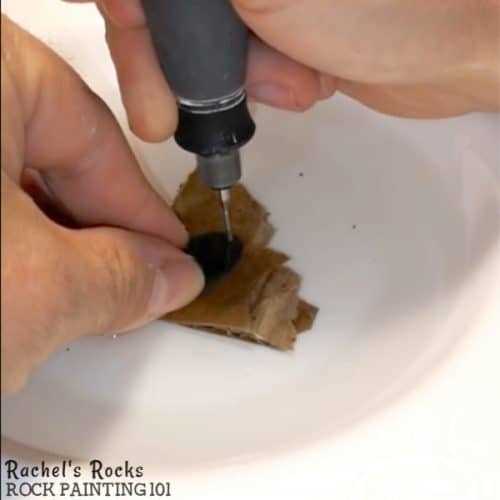
Hammer drill bits are specifically designed for use with a hammer drill. These bits have a tungsten carbide tip or insert that helps them penetrate stone more efficiently. The hammer drill provides a hammering action while the bit rotates, making it easier to drill into stone. Hammer drill bits are commonly used for drilling into concrete, masonry, and other hard materials.
4. Carbide Drill Bits
Carbide drill bits are made from a combination of carbide (a compound of carbon and other elements) and cobalt. These bits are incredibly hard and can withstand the demands of drilling into stone. Carbide drill bits are commonly used in industrial applications and can be expensive but worth the investment for heavy-duty stone drilling.
5. Twist Drill Bits
Twist drill bits are the most common type of drill bits and are suitable for drilling into softer stones. These bits have a spiral groove that helps to remove debris while drilling. However, when working with harder stones, twist drill bits may not be as effective and can dull quickly.
| Type of Drill Bit | Description |
|---|---|
| Masonry Drill Bits | Carbide-tipped bits for drilling into stone, effective and available in various sizes. |
| Diamond Drill Bits | Coated or tipped with diamond for drilling hard materials like stone, glass, and porcelain. |
| Hammer Drill Bits | Tungsten carbide-tipped or inserted bits designed for use with hammer drills. |
| Carbide Drill Bits | Hard and durable bits made from a combination of carbide and cobalt. |
| Twist Drill Bits | Common drill bits with a spiral groove, suitable for softer stones. |
Choosing the right drill bit for your stone drilling project is essential for achieving the best results. Consider the hardness of the stone, the size of the hole you need, and the type of drill you will be using. By selecting the appropriate drill bit, you can ensure smooth and accurate drilling into stone.
Selecting the Appropriate Power Tools for the Job
When it comes to drilling into stone, selecting the right power tools is crucial for the success of your project. The type of power tool you use can make a significant difference in the efficiency and precision of your drilling. Here are some factors to consider when choosing the appropriate power tools for the job:
1. Hammer Drill
A hammer drill is a popular choice for drilling into stone due to its ability to deliver a rapid hammering action while rotating the drill bit. This combination of hammering and rotation helps to break up the stone and create a hole. Hammer drills have a special feature that allows the user to switch between regular drilling mode and hammer drilling mode, which makes them versatile for various drilling tasks.
2. Rotary Hammer
If you are working with harder types of stone or need to drill larger diameter holes, a rotary hammer may be the better option. Rotary hammers are more powerful than regular hammer drills and can generate a higher impact force. They are designed to handle heavy-duty drilling tasks and are capable of drilling through tough materials like concrete and granite.
3. Diamond Core Drill
If you require precise and clean holes in stone, especially for projects like installing pipes or creating openings for electrical wiring, a diamond core drill is the ideal choice. Diamond core drills use a diamond-tipped drill bit to cut through the stone, resulting in accurate and smooth holes. They are commonly used in professional applications where precision is paramount.
When selecting the power tool for your stone drilling project, consider the hardness of the stone, the size and depth of the holes you need to drill, and the level of precision required. Choosing the appropriate power tool will ensure that you achieve the desired results efficiently and effectively.
Preparing the Stone for Drilling
Before you start drilling into stone, it is important to properly prepare the surface to ensure a successful drilling process. Here are the steps to follow:
Clean the Stone Surface
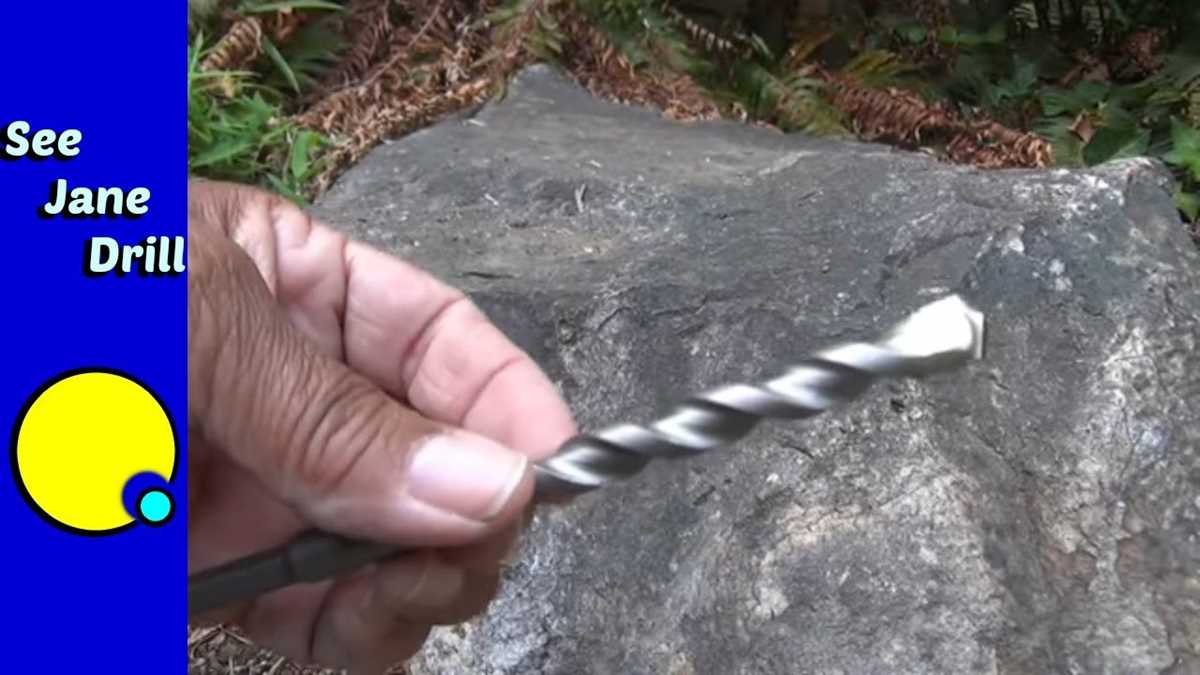
The first step in preparing the stone for drilling is to clean the surface. Use a soft cloth or sponge to remove any dust, dirt, or debris from the stone. This will help to improve the drilling accuracy and prevent damage to the drill bit.
Mark the Drilling Spot
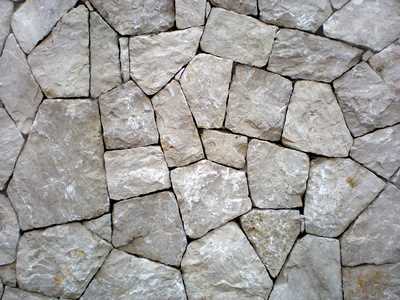
Next, mark the spot where you want to drill. Use a pencil or marker to make a small dot on the surface of the stone. This will serve as a guide and help you to position the drill accurately.
Choose the Right Drill Bit
Selecting the appropriate drill bit is essential for drilling into stone. There are different types of drill bits available, such as masonry drill bits or diamond-tipped bits. Choose a drill bit that is specifically designed for drilling into stone to ensure the best results.
Secure the Stone
It is important to secure the stone in place before you start drilling. Place the stone on a stable and flat surface, such as a workbench or tabletop. If the stone is small or lightweight, you can use clamps to hold it securely. This will prevent the stone from moving or shifting during the drilling process.
Wear Safety Gear
Before you begin drilling, make sure to wear appropriate safety gear. This includes safety glasses to protect your eyes from flying debris, gloves to protect your hands, and a dust mask to avoid inhaling any dust particles.
Apply Lubricant
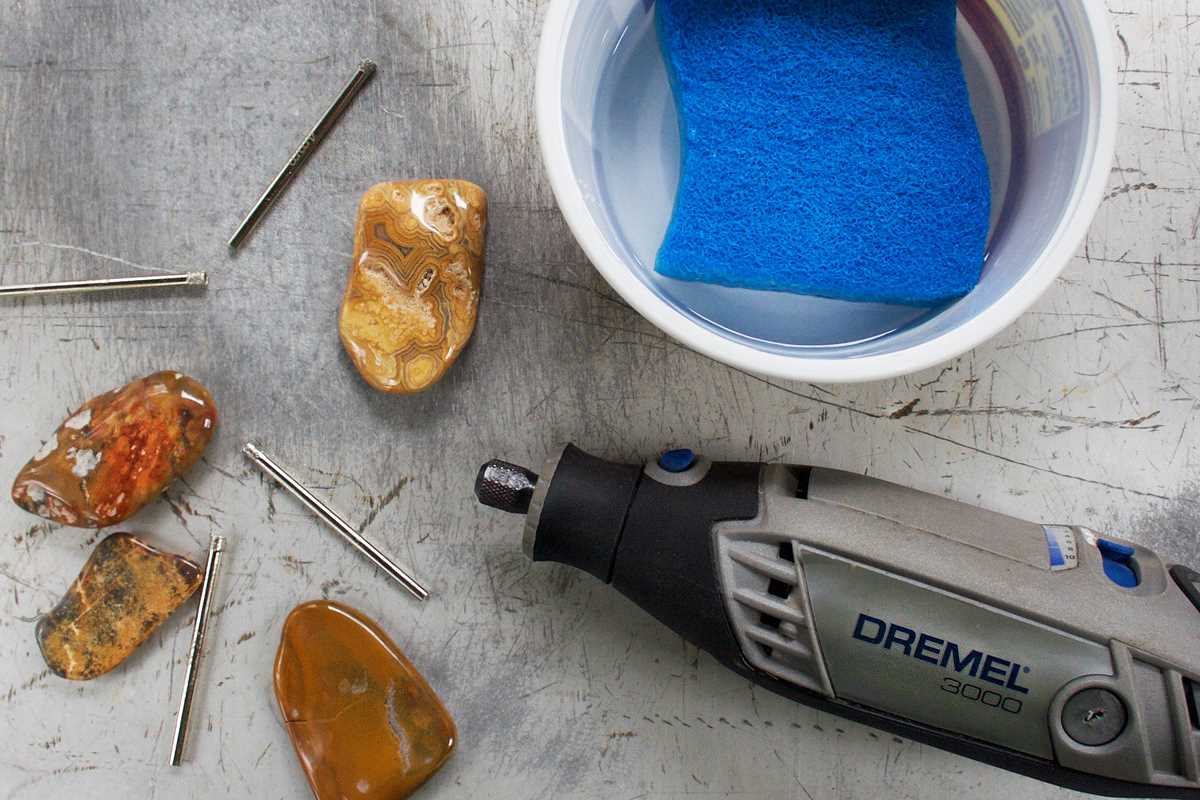
Using a lubricant can help to reduce friction and heat during the drilling process. Apply a small amount of water or cutting oil to the surface of the stone and the drill bit. This will help to keep the drill bit cool and prolong its lifespan.
Start Drilling
Finally, you are ready to start drilling into the stone. Position the drill bit on the marked spot and hold the drill firmly. Start drilling at a slow and steady pace, applying gentle pressure. As you continue drilling, periodically remove the drill bit to clean away any debris and reapply lubricant if necessary.
By following these steps and taking the time to properly prepare the stone for drilling, you can ensure a successful and efficient drilling process.
Cleaning and Marking the Surface of the Stone
Before drilling into stone, it is important to clean the surface thoroughly to remove any dirt, debris, or other contaminants. This not only ensures a clean drilling surface but also helps to prevent damage to the stone and drilling equipment.
Here are the steps to clean and mark the surface of the stone:
- Gather cleaning supplies: You will need a soft brush, water, and mild detergent. Avoid using harsh chemicals or abrasive cleaners that can damage the stone.
- Brush the surface: Using the soft brush, gently remove any loose dirt or debris from the stone. Be sure to brush in all directions to ensure thorough cleaning.
- Prepare the cleaning solution: In a bucket or container, mix water with a small amount of mild detergent. Use a ratio of approximately 1 tablespoon of detergent per gallon of water.
- Clean the surface: Dip the brush into the cleaning solution and gently scrub the surface of the stone. Pay special attention to any areas with stains or discoloration. Rinse the brush frequently in clean water to remove dirt and detergent.
- Rinse the stone: Once you have cleaned the entire surface, rinse it thoroughly with clean water. This will remove any remaining detergent or residue.
- Dry the stone: Use a clean, absorbent cloth or towel to dry the stone. Pay attention to any areas that may be difficult to reach or prone to moisture buildup.
- Mark the drilling position: After the stone is clean and dry, use a pencil or marker to mark the desired drilling position. Make sure the mark is visible and will not be covered or removed during the drilling process. You may also consider using masking tape to create a more defined drilling area.
By following these steps, you will ensure a clean and properly marked surface for drilling into the stone.
Securing the Stone to Avoid Slippage
When drilling into stone, it is important to secure the stone properly to avoid slippage. This will help ensure accuracy and prevent damage to the stone or injury to yourself.
1. Choose a stable surface
- Place the stone on a stable and flat surface, such as a workbench or sturdy table.
- Avoid placing the stone on an uneven or slippery surface that could cause it to move or fall during drilling.
2. Use clamps or a vice
- If the stone is small enough, you can use clamps to secure it to the work surface.
- Place the clamps tightly around the edges of the stone to hold it securely in place.
- If the stone is too large for clamps, you can use a vice instead.
- Open the vice and position the stone between the jaws, then tighten the vice to secure the stone.
3. Create a stable base
- If your drilling project requires drilling a hole through a stone that is already installed, you may need to create a stable base to prevent slippage.
- Place a piece of scrap wood or a stable surface beneath the stone to provide support and prevent movement.
4. Use adhesive
- If clamps or a vice are not suitable for your stone, you can use adhesive to secure the stone to the work surface.
- Apply a strong adhesive, such as epoxy or construction adhesive, to the back of the stone.
- Press the stone firmly onto the work surface and allow the adhesive to dry and set according to the manufacturer’s instructions.
By taking these steps to secure the stone, you can ensure stability and minimize the risk of slippage, allowing for a more accurate and safe drilling process.
Practicing the Proper Techniques
Drilling into stone can be a challenging task, but by following these proper techniques, you can achieve accurate and successful results.
1. Choose the right drill bit
Using the correct drill bit is crucial for drilling into stone. For softer stones, such as limestone or sandstone, a carbide-tipped masonry bit will work best. Harder stones like granite or marble may require a diamond-tipped drill bit.
2. Mark the drilling spot
Before drilling, it’s important to mark the exact spot where you want to drill. Use a pencil or a marker to make a small dot or an “x” on the stone to guide your drilling.
3. Secure the stone
To avoid any movement or slipping during drilling, it is essential to secure the stone in place. Use clamps or a vise to hold the stone firmly in position.
4. Start with a small pilot hole
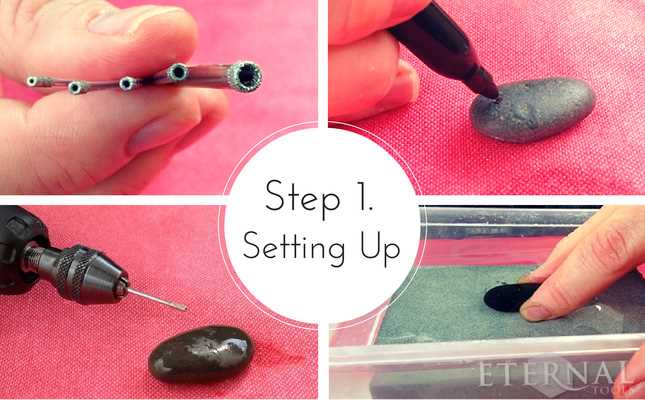
When drilling into stone, it’s recommended to start with a small pilot hole. This will help guide the drill bit and prevent it from slipping or wandering off the desired spot.
5. Apply consistent pressure
While drilling, apply consistent pressure on the drill. Avoid pushing too hard, as this can cause the stone to crack or break. Let the drill do the work and maintain a steady and controlled drilling pace.
6. Use water as a lubricant
To prevent the drill bit from overheating and to keep the stone cool, it’s advisable to use water as a lubricant. You can either spray water onto the drilling area or use a sponge to keep it moist.
7. Clean the hole regularly
As you drill, stone dust and debris may accumulate in the hole. It’s important to clean the hole regularly to prevent clogging and ensure a smooth drilling process. Use a brush or compressed air to remove the debris.
8. Take breaks when needed
Drilling into stone can be physically demanding. If you feel fatigued or the drill bit gets too hot, take breaks to rest and cool down the drill bit. This will help prevent any damage to the stone or the drill.
By practicing these proper techniques, you can improve your drilling skills and achieve accurate and clean holes in stone. Remember to always wear protective gear, such as goggles and gloves, when working with power tools.
FAQ:
What are some common techniques used for drilling into stone?
Some common techniques used for drilling into stone include using a drill with a hammer function, using a diamond core drill bit, and using water as a lubricant.
What is the best type of drill bit to use for drilling into stone?
The best type of drill bit to use for drilling into stone is a diamond core drill bit. Diamond is one of the hardest materials and is able to cut through stone effectively.
Do I need to use water when drilling into stone?
Yes, using water as a lubricant when drilling into stone is highly recommended. Water helps to cool down the drill bit and prevent it from overheating, which can lead to damage.
Can I use a regular drill for drilling into stone?
Yes, you can use a regular drill for drilling into stone, but it is recommended to use a drill with a hammer function. The hammer function helps to provide extra force and impact, making it easier to drill through the hardness of the stone.
What are some safety precautions I should take when drilling into stone?
Some safety precautions to take when drilling into stone include wearing safety goggles and gloves to protect your eyes and hands from flying debris, securing the stone to prevent it from moving, and using clamps or a vise to hold the stone in place while drilling.
What are some common mistakes to avoid when drilling into stone?
Some common mistakes to avoid when drilling into stone include using too much pressure, not using water as a lubricant, and not keeping the drill bit at a consistent speed. These mistakes can lead to broken drill bits or ineffective drilling.
Video:




![The Lapidary Bible: [3 IN 1] The Ultimate Guide for Beginners | Techniques, Tools and Tips for Turning Raw Stones into Beautiful Crafts](https://m.media-amazon.com/images/I/51g8E5SPuzL._SS520_.jpg)





